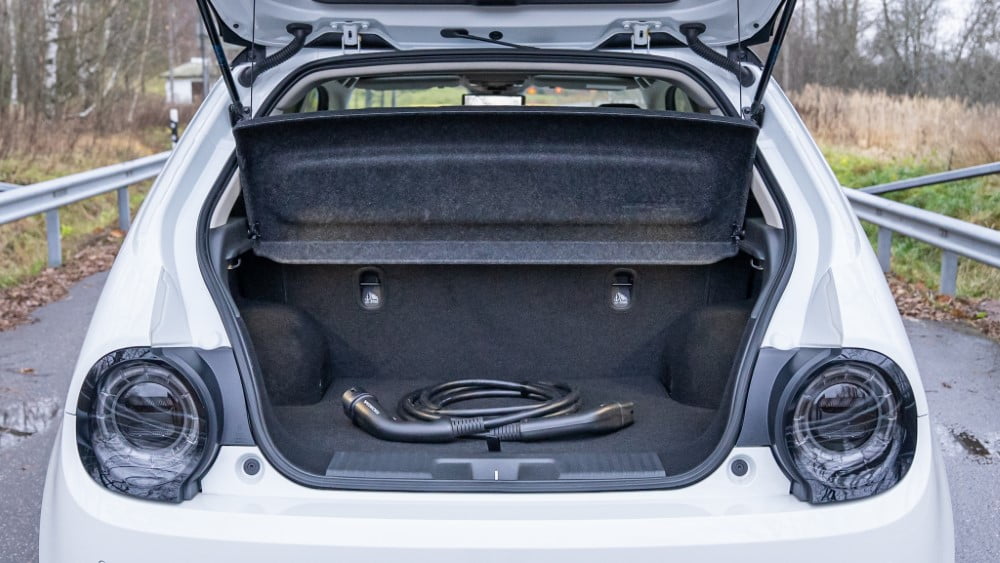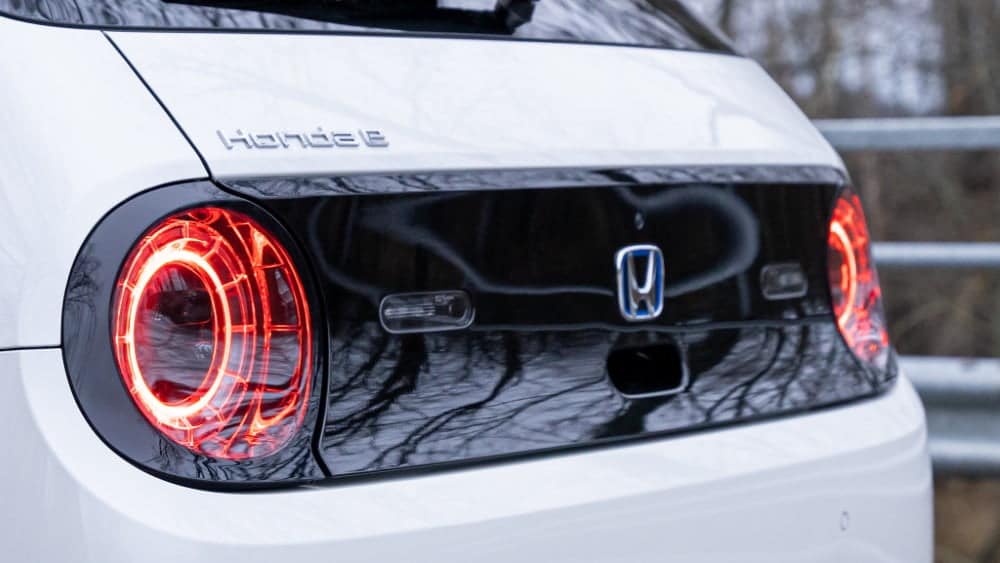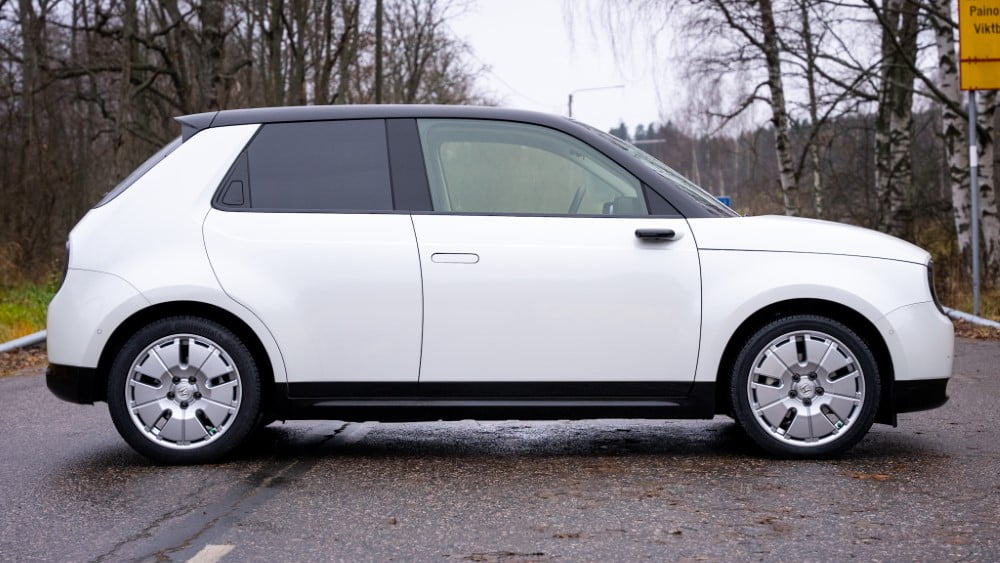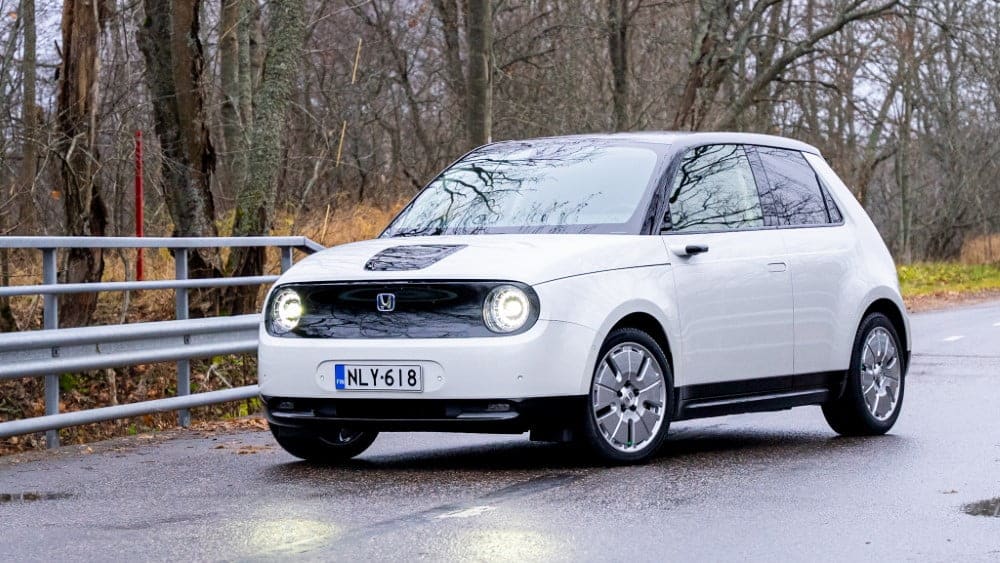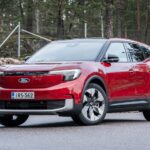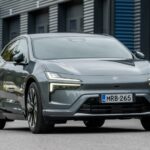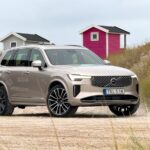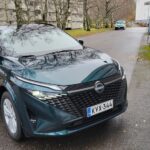Small and cute are the best adjectives to describe Honda’s small all-electric car. Overall, the Honda e looks and feels like a futuristic car that should have been on the market 10 years ago. However, it is not quite the perfect package.
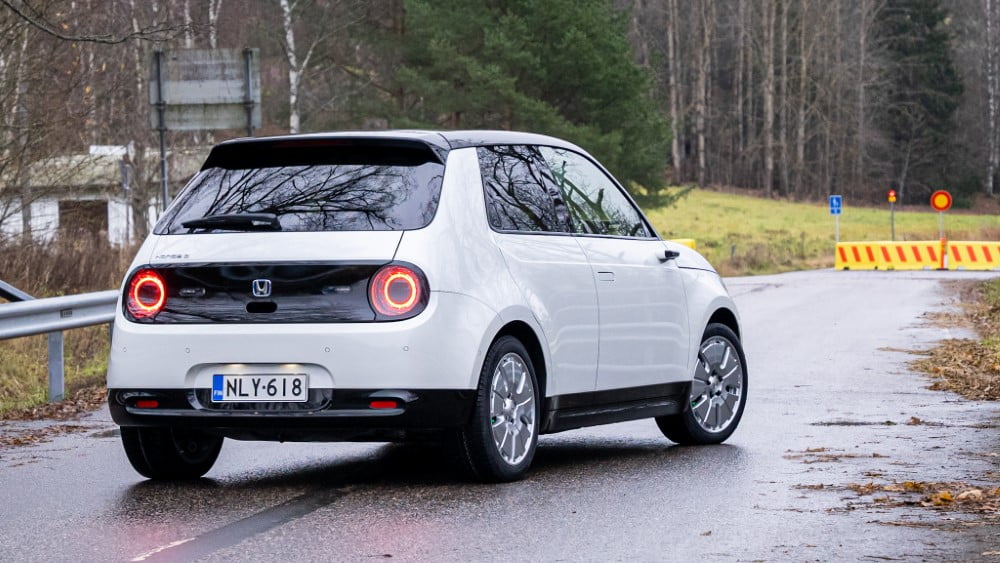
The Germans are amazed
The Honda e won the “German car of the year 2021” award, which can be considered a major achievement in the German car market. The Honda e is the first Japanese car model in history to win the award.
By accident, the Honda e did not win the award. Hidden under a cute exterior is an excellent all-rounder, which surprises with its highly responsive handling. With an overall length of just 3.9 metres, the car has an exceptionally small turning radius of 4.6 metres, which puts a smile on the face of the driver when making a u-turn time and time again. It feels like the car is spinning in place.

Despite its small size, the Honda e offers a stiff ride even at higher speeds. The poor soundproofing and bumpy feel typical of smaller cars is not noticeable in its controls. With a curb weight of just over 1,500 kilos and a perfect 50:50 weight distribution, the ride is stable and decisive.
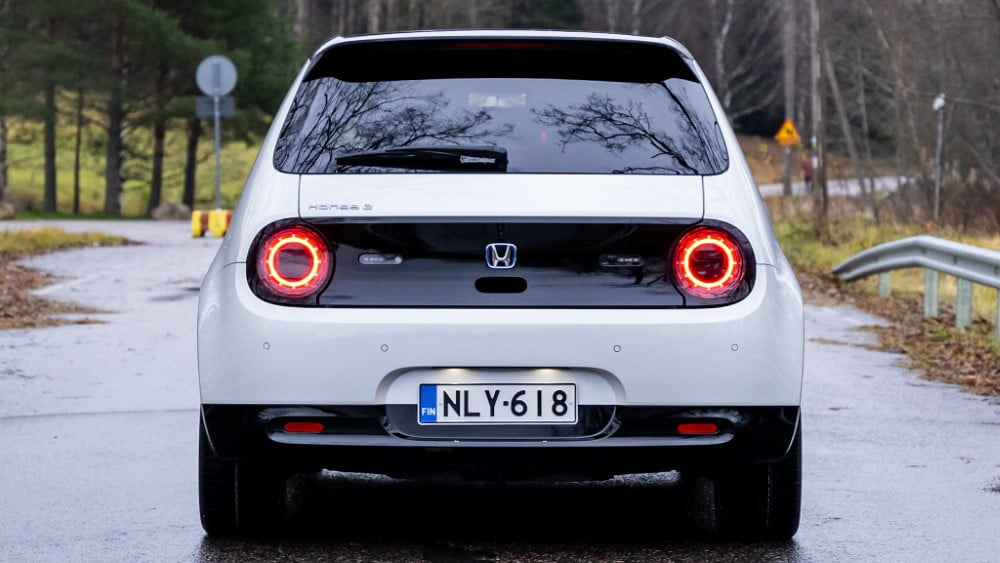
Dashboard lined with screens
No expense has been spared on the number of screens in the small e’s cabin. In addition to a large digital instrument panel, the dashboard has two large screens for the nav, radio and car settings. The assistant driver can easily help you enter your destination on his own screen, for example.
The car’s mirrors are also equipped with display and camera technology. Small cameras have been integrated into the front door indicators, eliminating the need for traditional large mirrors. The rear-view mirror can be used as a camera image or as a traditional mirror.
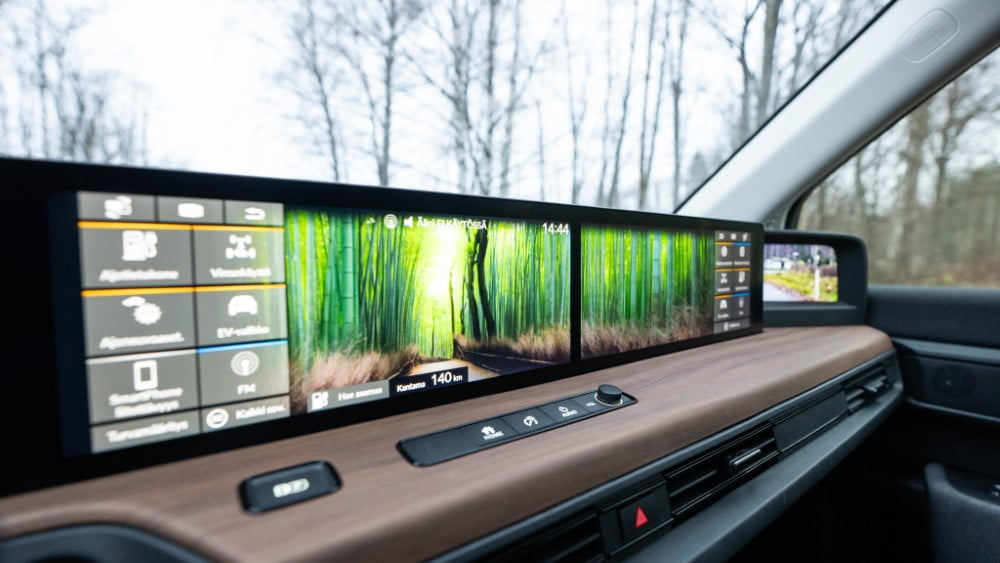
The side mirrors work surprisingly well even in miserable rain, while the rear-view mirror camera in the rear window gets dirty quite quickly, making it easier to use a traditional mirror. The mirror can be easily switched between the camera and a regular mirror by changing the night/day position of the mirror.
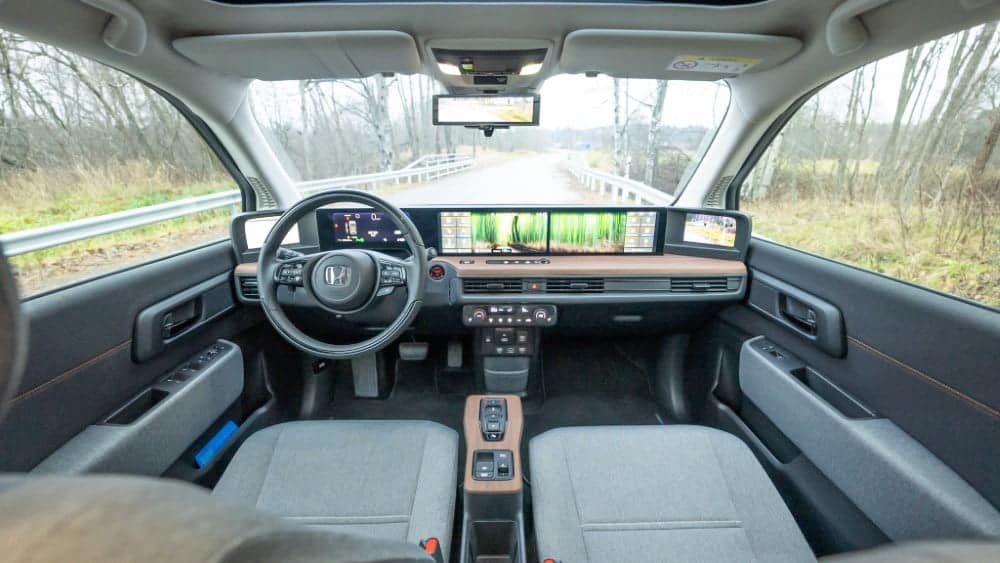
200 kilometres on a single charge in zero temperatures
In southern winter conditions, the Honda e can cover just under 200 kilometres on a single charge in normal everyday driving. Electricity consumption is affected by many factors, such as the need for heating equipment, the number of cold starts and the driving style and speed.
During the test drive, electricity consumption varied between 18 and 20 kWh/100km in urban and suburban driving. The car has a total battery capacity of 35.5 kWh and a WLTP range of 210-222 km.
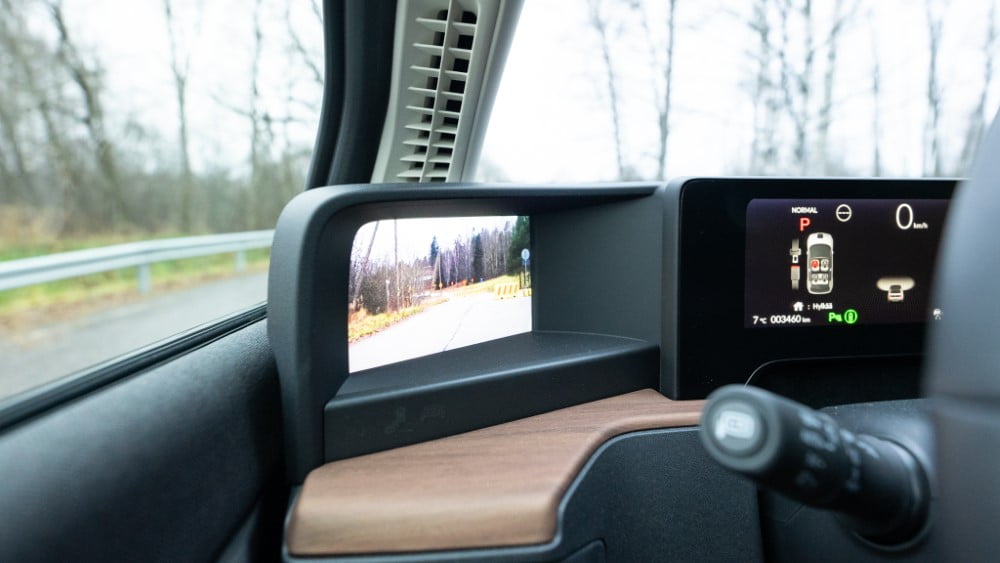
The test drive did not quite match the WLTP range. In summer weather and with summer tyres, it is possible to get close, which is not always obvious when talking about operating distances for electric vehicles.
Although the battery capacity of the Honda e is not at the top end of the small electric car size range, the possibility of 50 kW CCS DC charging speeds up the charging of the car. This gives the battery 80% more power in 31 minutes. The heel of the battery is the AC charging system, from which the car can draw a maximum of 6.6 kW of power.
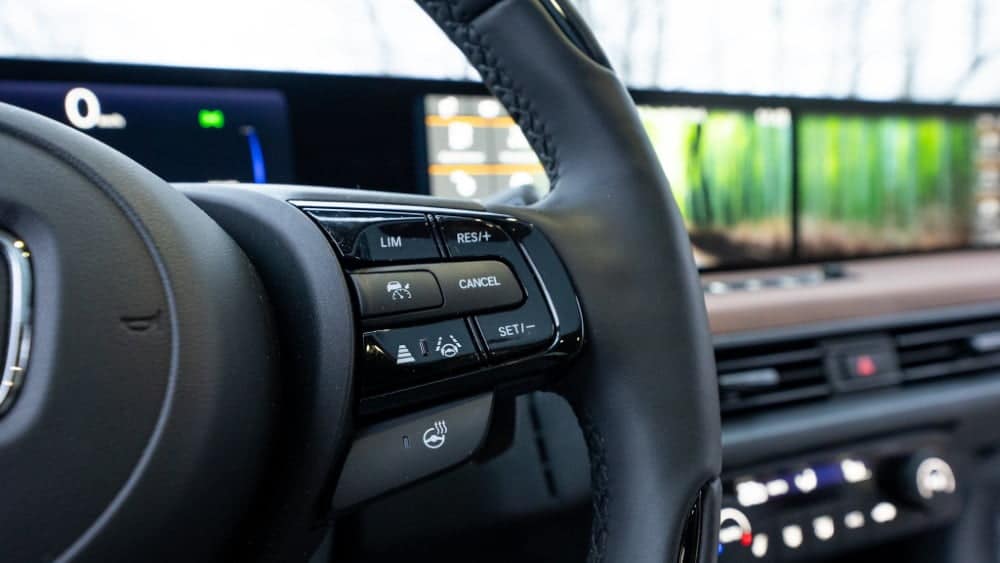
Instant power and traction control in rough conditions
The rear-wheel drive little Honda e is extremely fun to drive for its agility, but also for its efficiency. On soft friction tyres, traction control seems to be repeatedly employed as the electric motor’s power is instantly linked to the movement of the accelerator pedal.
Two power versions of the Honda e are available, the 100 and 113 kW versions. Both electric motors offer 315 Nm of torque. Top speed is only 145 km/h, which is still good enough for Finnish roads.
The more powerful Honda e Advance model was test-driven. With winter tyres, the maximum power of 154 hp cannot be fully enjoyed. With zero to 60 km/h acceleration of “only” 8.3 seconds, it gives the wrong impression of the car’s briskness at urban speeds.
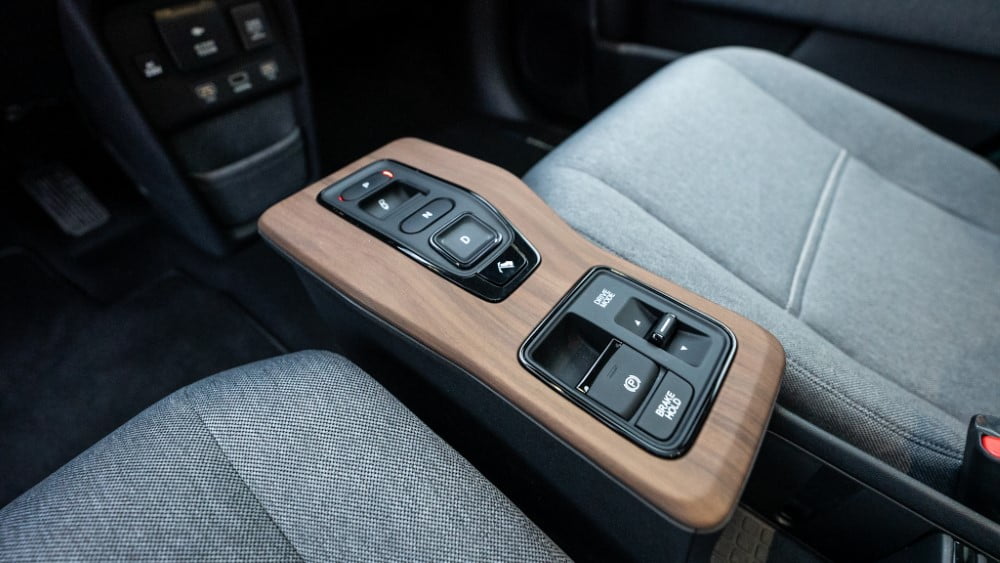
In the city, the power figures move the compact Honda e very briskly, and there’s no need to be left behind.
The standard equipment is comprehensive, with a long list of automatic and safety-focused features. Road departure warning, adaptive cruise control and fully automatic headlights always come as standard.
For the most part, the safety features seem to work, as far as you can sense them in normal driving. Occasionally, however, the lane departure warning and collision warning systems react too sensitively to situations where there seems to be no danger.
The test-driven Advance trim comes with mainly comfort features such as a heated windscreen and steering wheel, a more powerful audio system, larger wheels and the aforementioned rear-view camera.
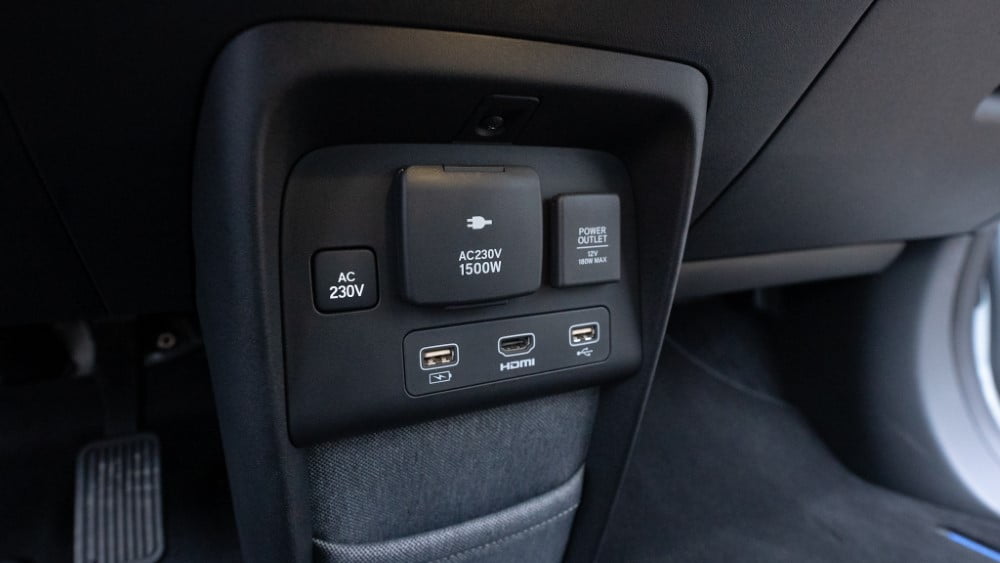
Bringing euros to the table
Unfortunately, the low car tax does not save the Honda e’s price, as the “starting price” for the Honda e Comfort model is around €35,600. The price of the more powerful Advance model rises to around €42,000. The only option available is a metallic finish, so the final price is not much higher than the starting price.

The car’s low battery capacity classifies it as a city car, making it more challenging to go on long journeys. However, the powerful DC charging system allows the battery to be charged quickly, and the personal appearance of the car made even a Tesla driver who passed by the charger admire the car from top to bottom.

Honda e Advance
- Electric motor power: 113 kW. (154 hp.)
- Electric motor torque: 315 Nm.
- Driving battery capacity: 35.5 kWh
- Rated range on a single charge: 210 km.
- Test-driven range on a single charge: 190 km.
- Acceleration: 8.3 sec (0-100 km/h)
- Combined electricity consumption: 17.8 kWh/100km.
- Test drive electricity consumption: 18-20 kWh/100km.
- Curb weight: 1542 kg.
- Traction: rear-wheel drive
- Luggage compartment: 171 l.
- Starting price: €41 987 (Comfort equipped: €35 624)
